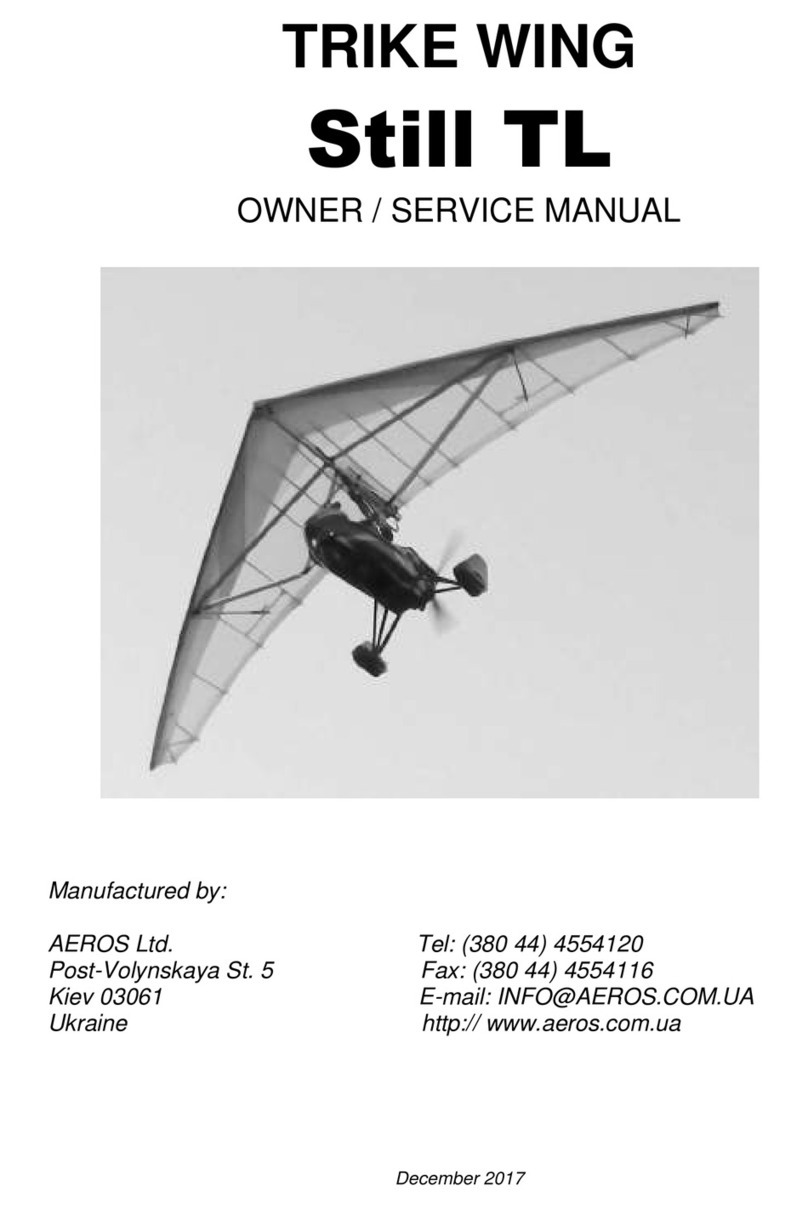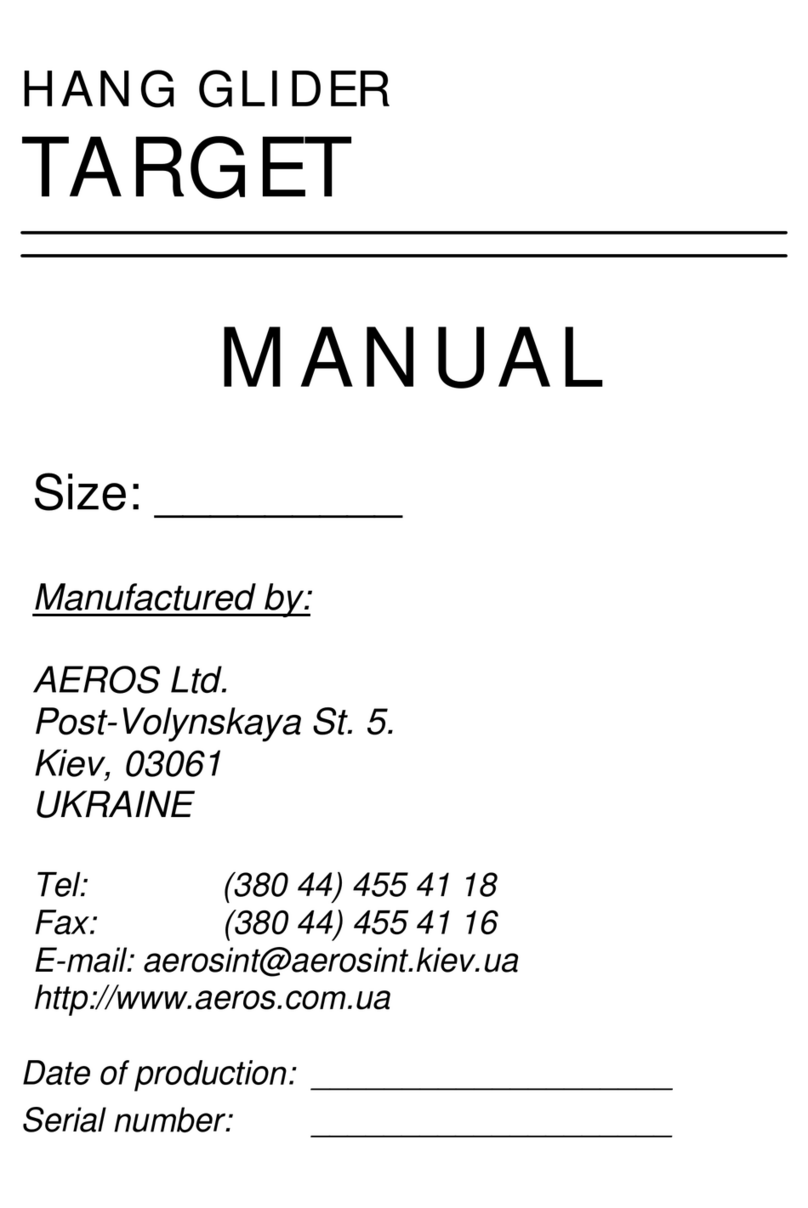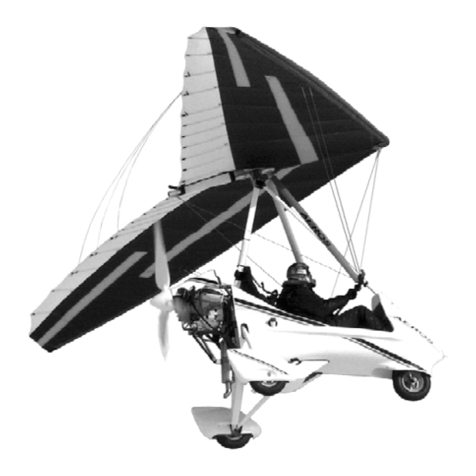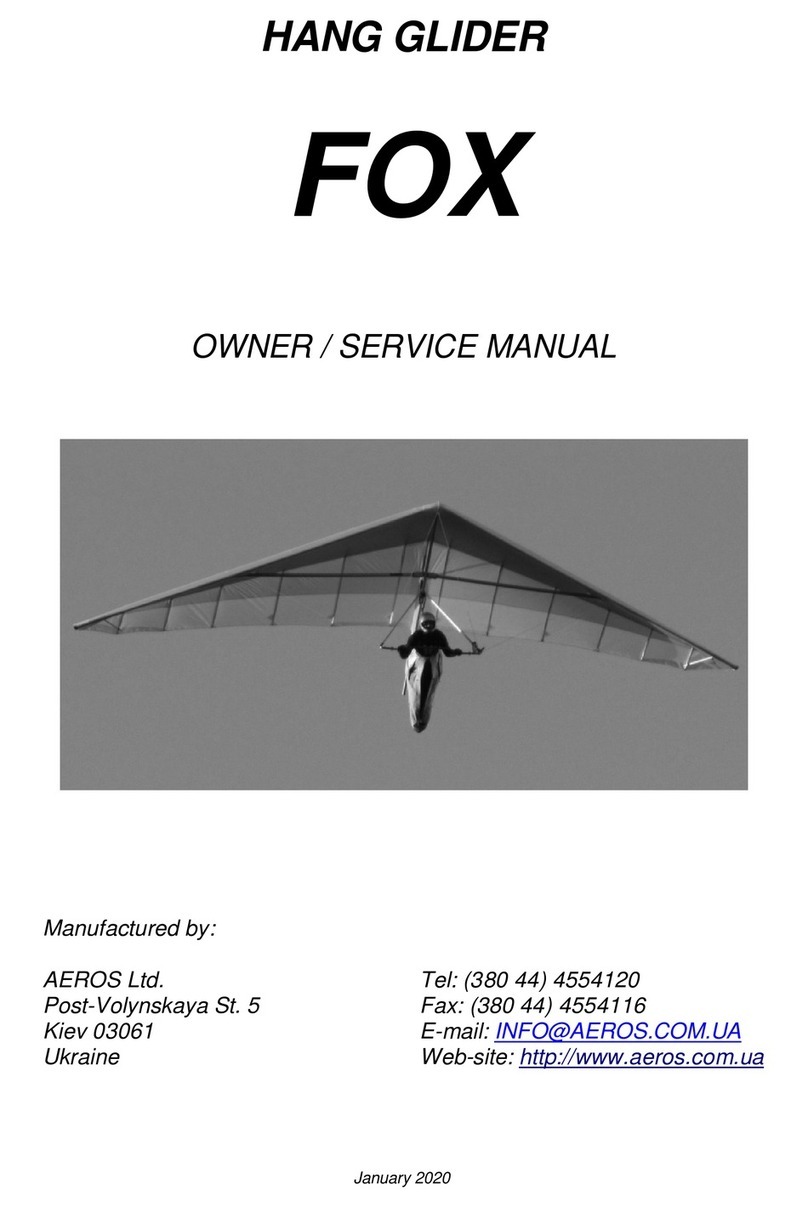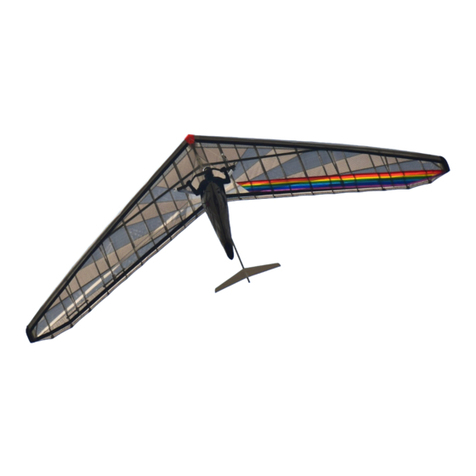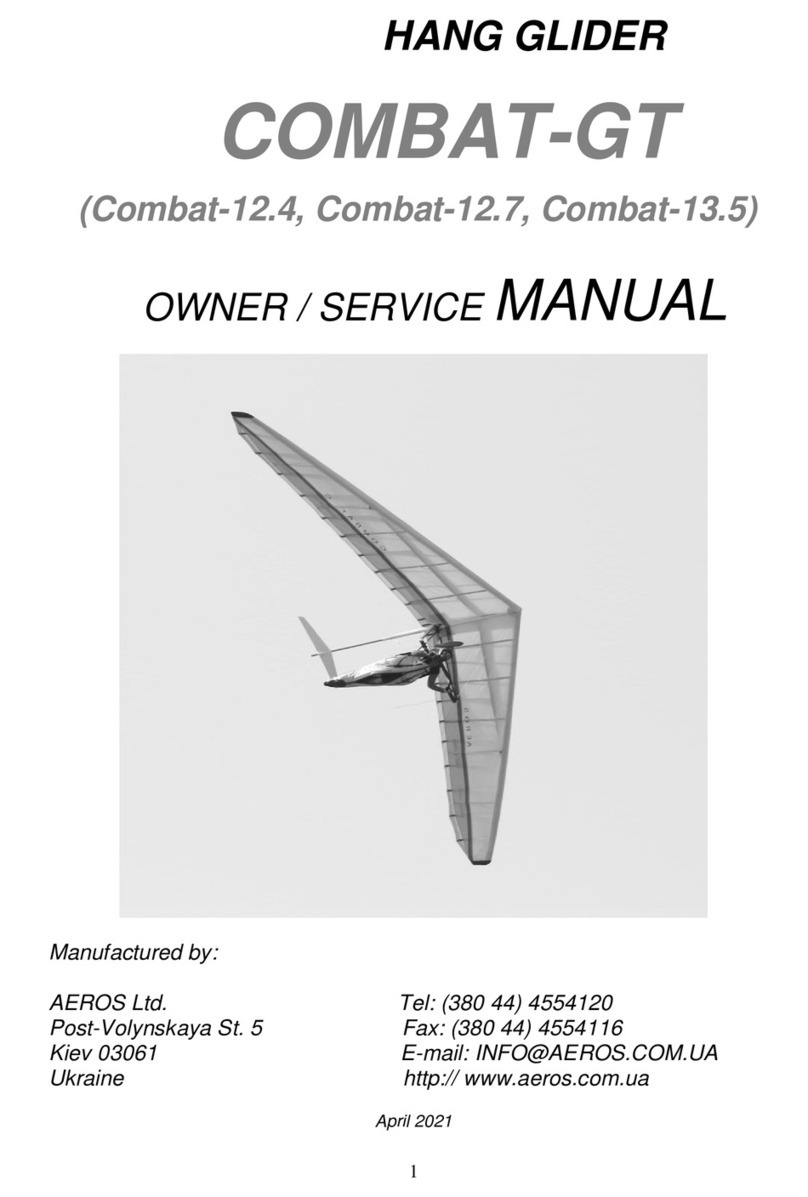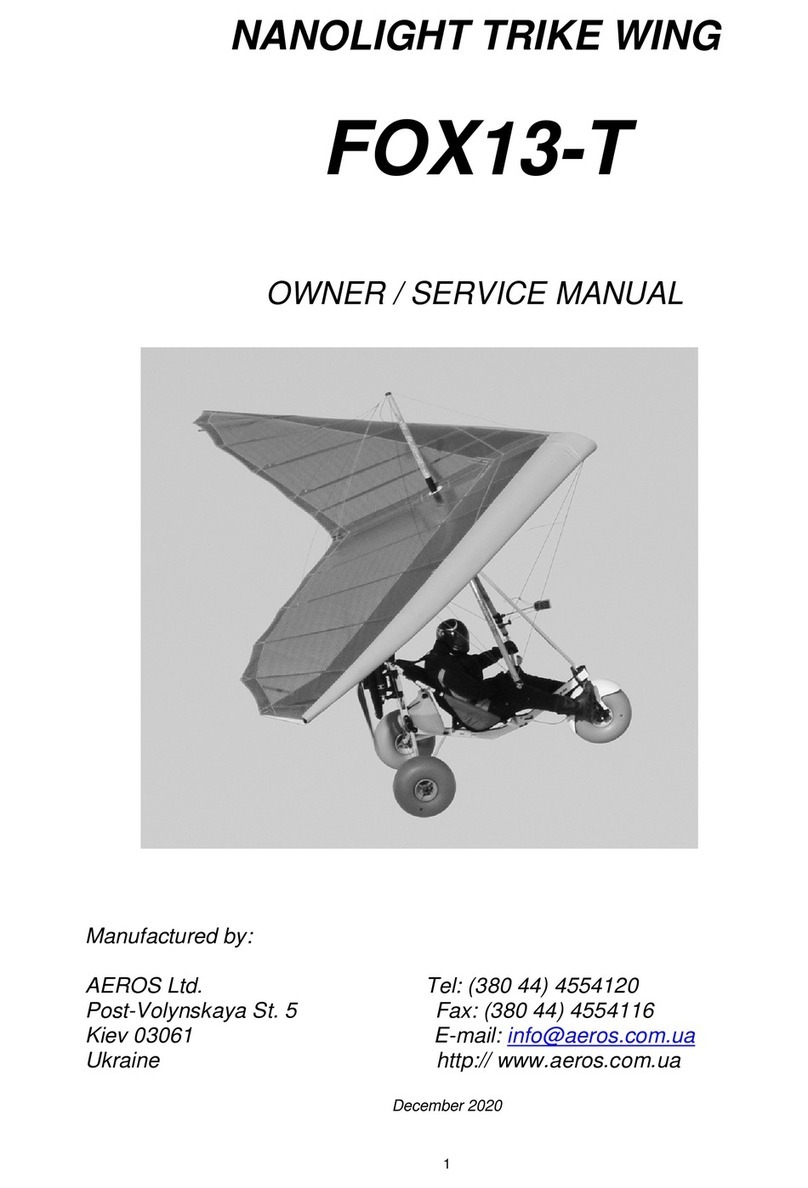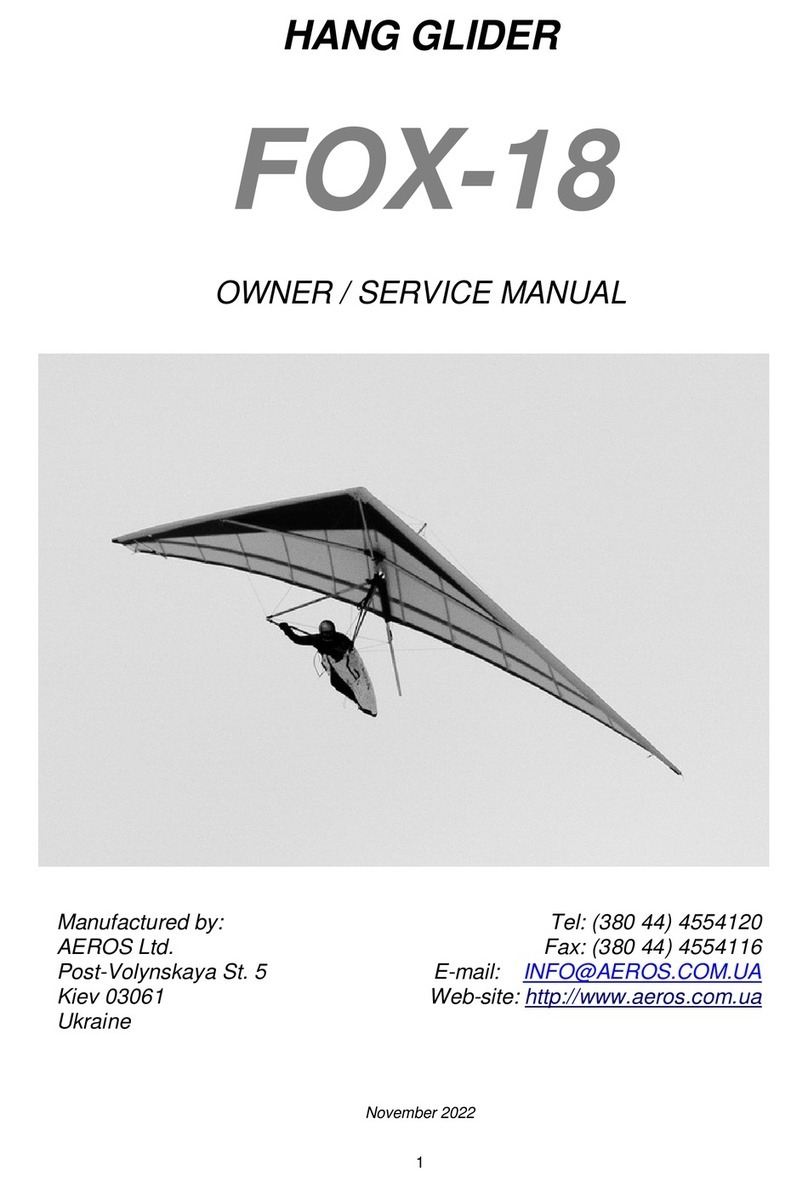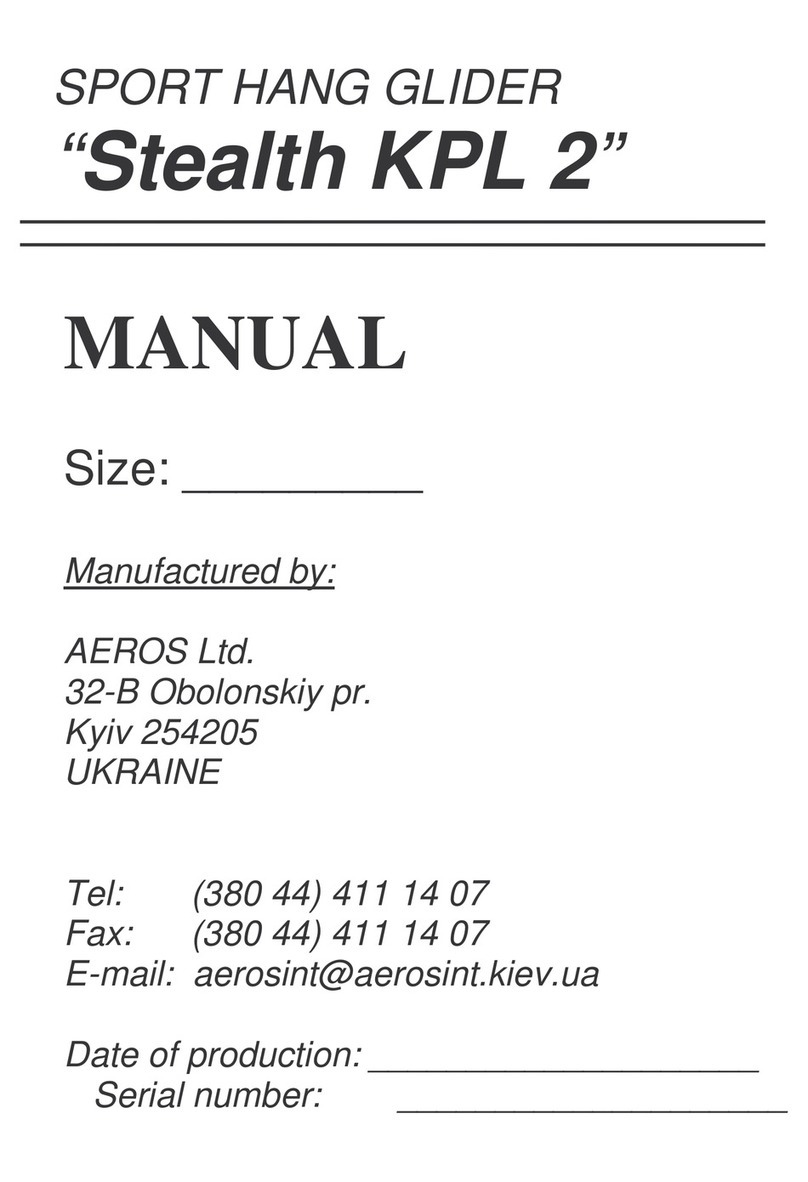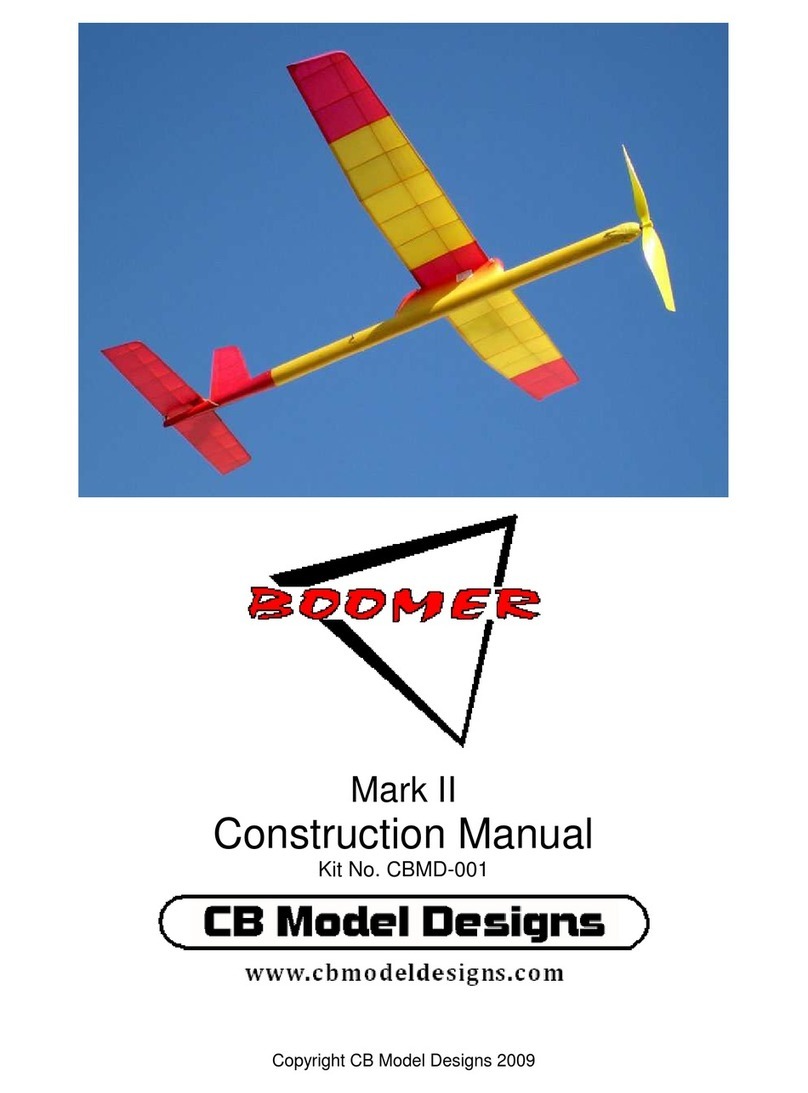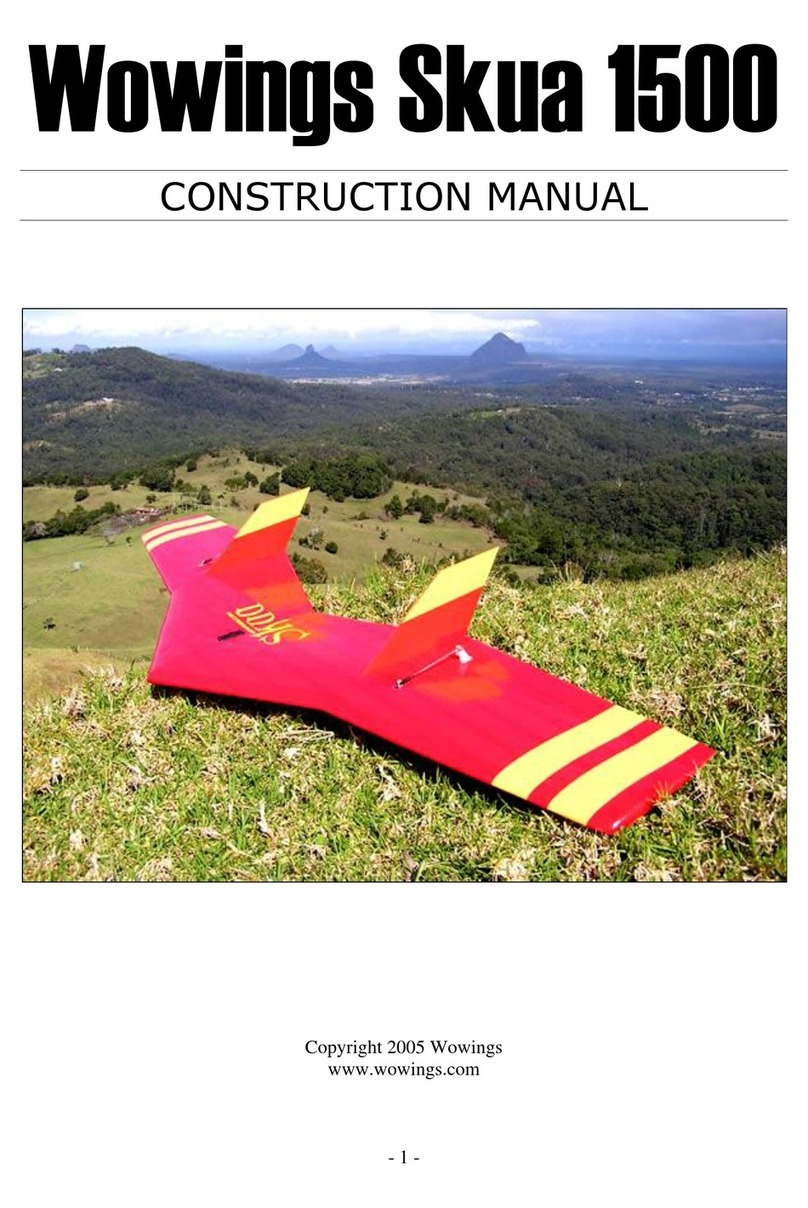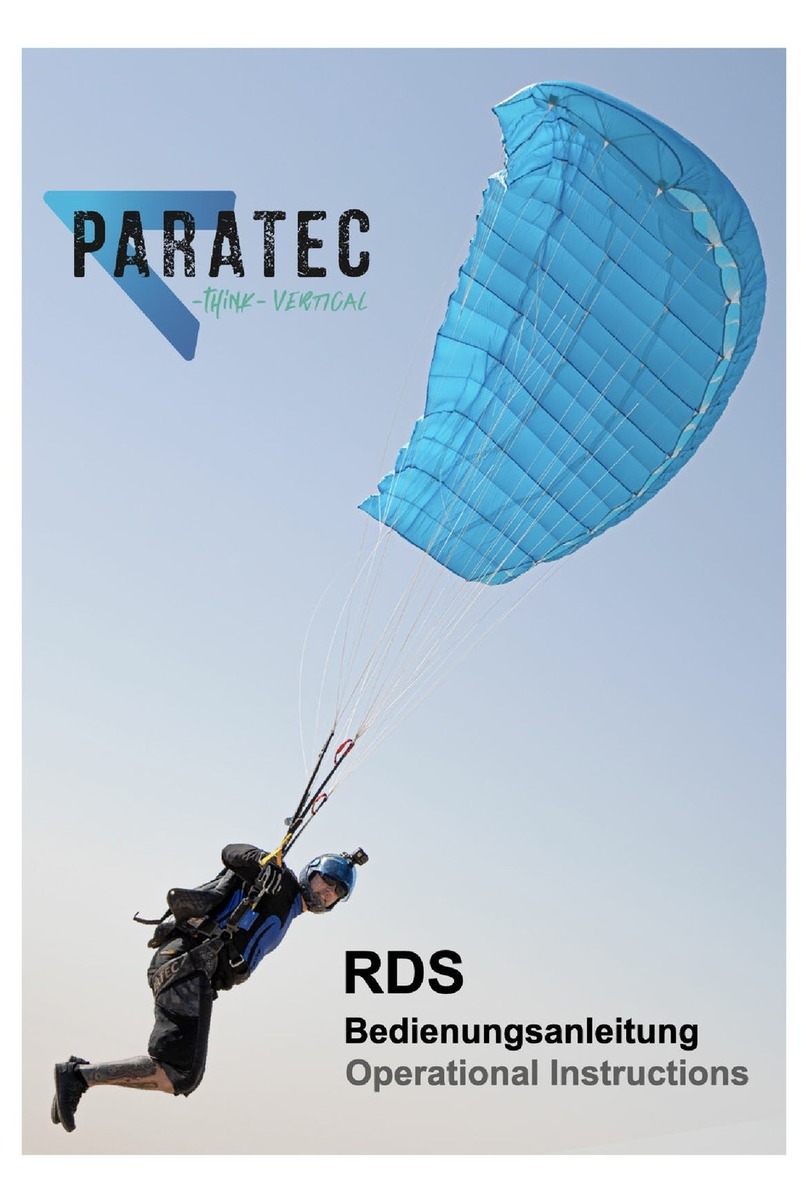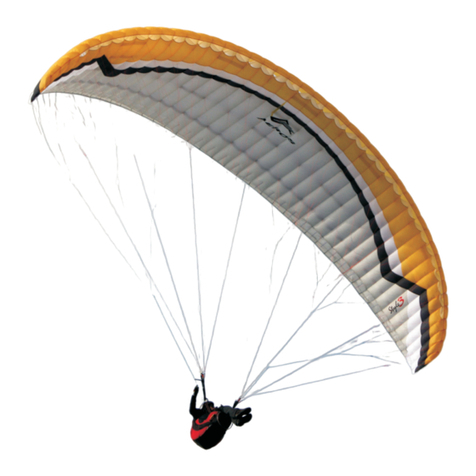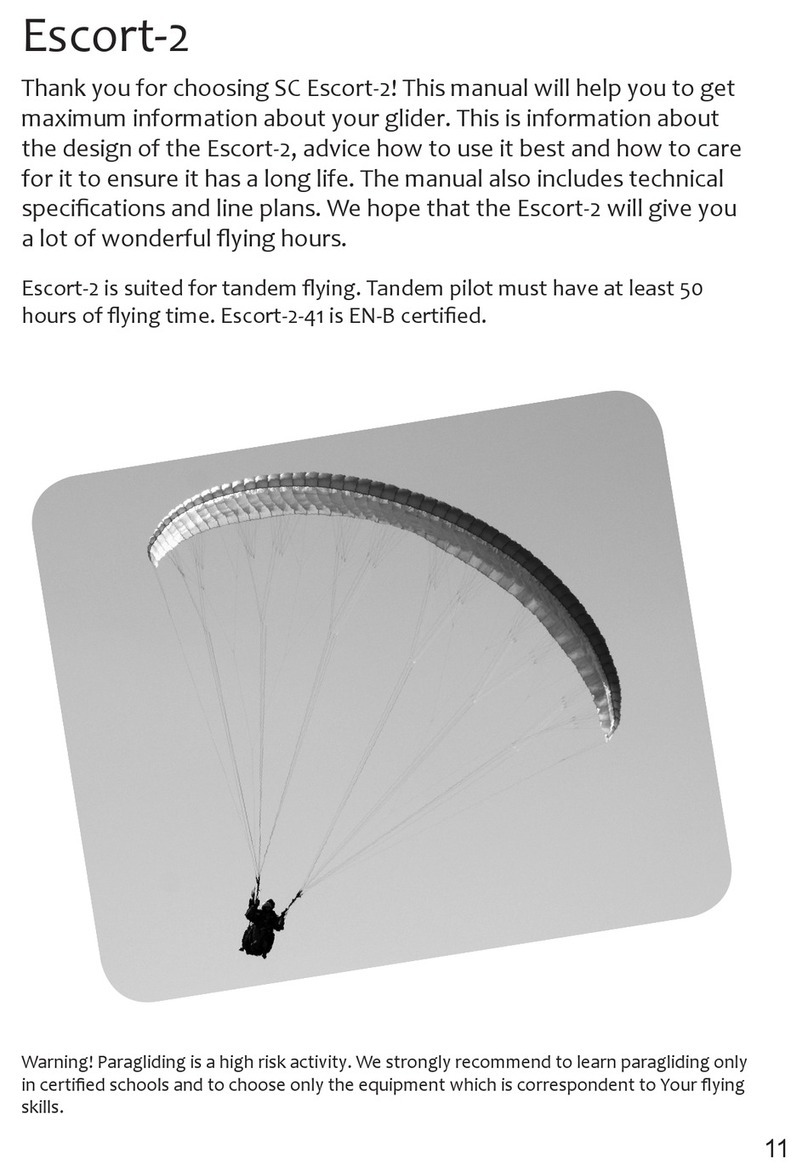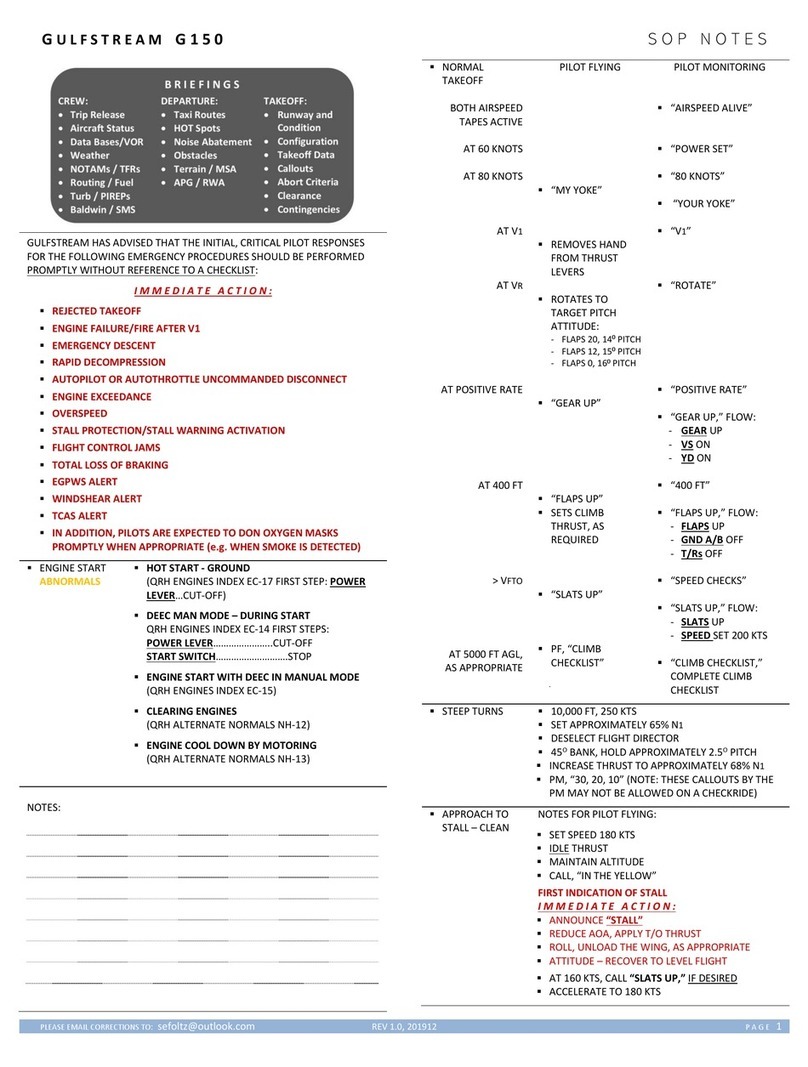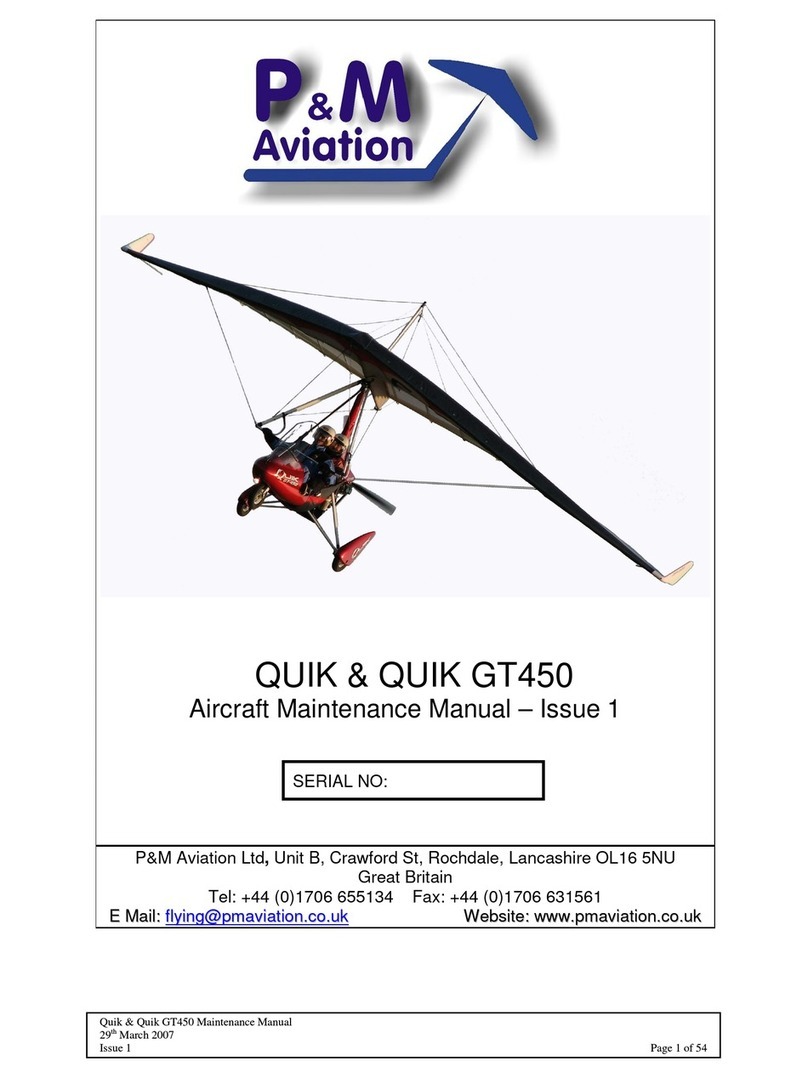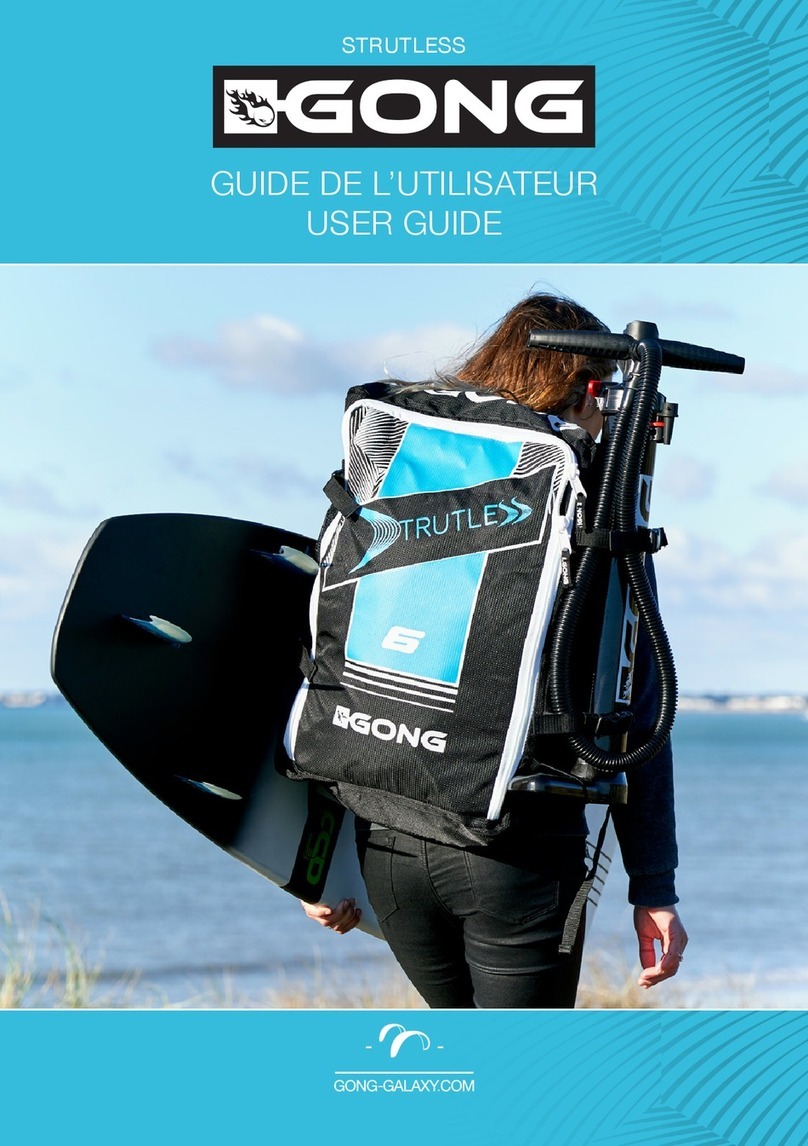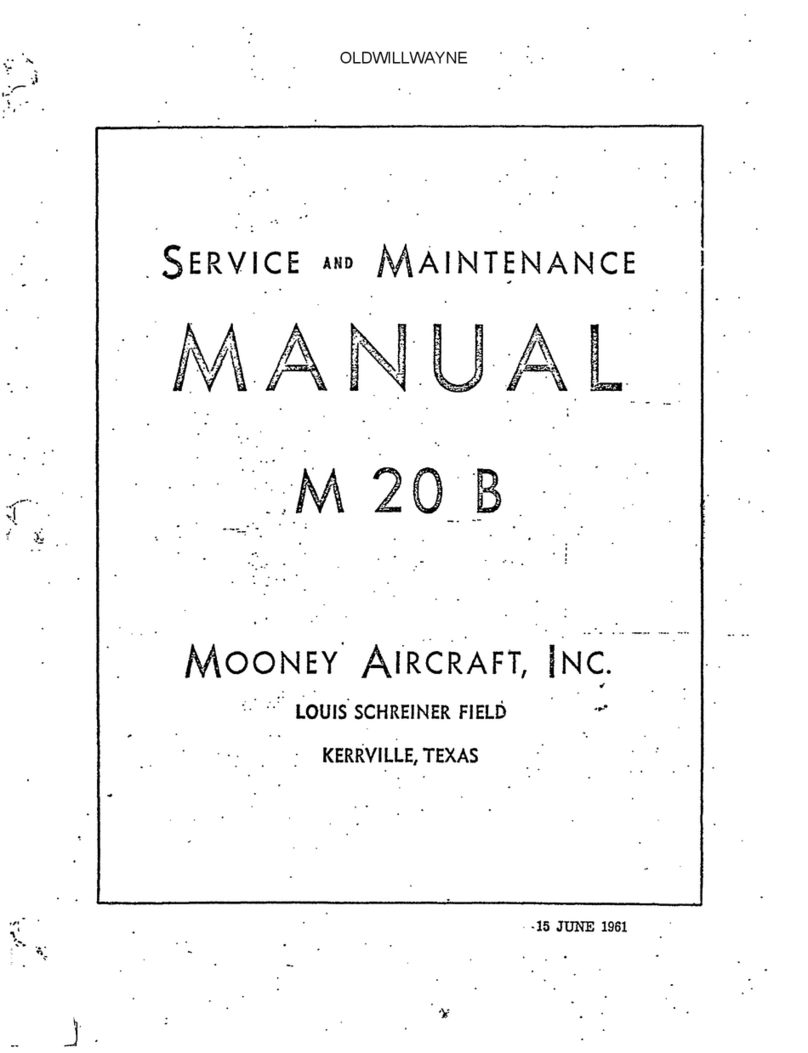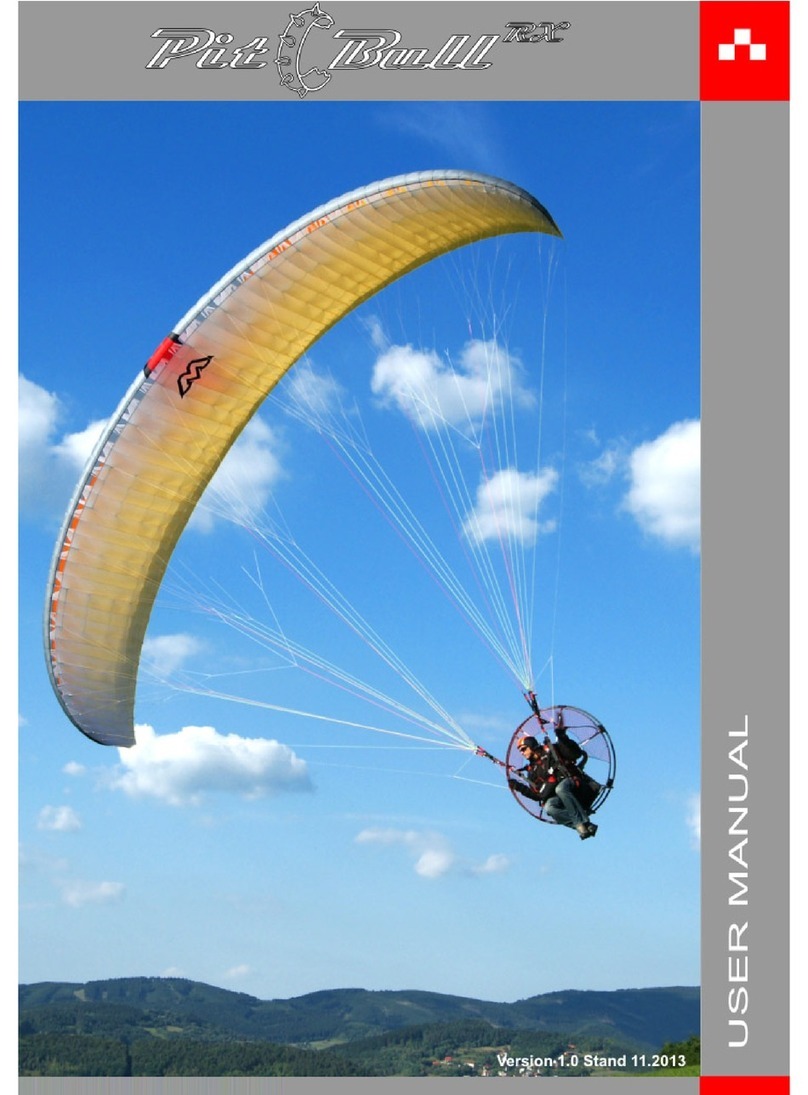
Section 6. Maintenance
6.1. Tuning
A correctly tuned glider is comfortable and has good handling in all allowed flight modes. Stalker Phantom
has a number of adjustment points that can be used for changing its performance.
6.1.1. Hang point.
Trim speed should be different for different hook in weight. The more the weight, the higher speed you’ll
have (see Flight Speed). Adjust hang point, in order to achieve trim speed corresponding to your weight. If
the glider has already been tuned for lower weight, move the hang point backwards for a heavier pilot.
6.2. Regular inspections of the glider
It is necessary to check your glider regularly for damages, possible structural deformations, operational
depreciation, tuning. You have to inspect frame (D-spars, ribs, keel, trapeze), wires, all hinges and fittings,
bolt connections, sail, control system tuning.
6.2.1. Instruments and facilities
- Four supporting struts for proper setting up the glider relatively to the ground level
- Electronic inclinometer for measurement aileron setting up angle and angle of the control surfaces
deflection
- Lamp or lighter for searching cracks in D-spars
- Ruler and slide caliper
- Set of spanner and other bench tools
6.2.2. Inspection intervals
Before the first use;
After each rough landing, in order to find any possible structural deformations;
After every 100 hours of flight or annually, whatever comes earlier.
6.2.3. Frame inspection
Inspect D-cells with the view to find any distortions, damage, cracks, especially at root fitting area,
spar belt area. If you found some cracks on the outer surface of the D-spar skin, use the lamp for checking
if this crack exists on the outer skin – light the crack zone and look inside the D-spar, if you see the light
inside the D-spar, that mean you have a crack on the outer skin. If any D-cell damage detected, seek advice
and assistance in its repair from your local dealer. Don’t make repair yourself, unless you have experience
with repair of carbon plastic structures.
Inspect control frame wires and all control system wires, looking for broken threads, tear and signs of
corrosion and replace them if you found any.
Check all bolting. Bolts should be tightened and locked. Where self-locking nuts are used, not less
than 2 thread coils should be visible.
Check the keel beam and ribs, looking for permanent deformation, dimples, signs of corrosion, cracks,
especially near bolts and rivets.
Check rib hinges. Axial play must not allow the rib end to move more then 3mm. If the rib end moves
more, you have to bush the hinge hole for preventing such axial play.
6.2.4. Check the wing anhedral angle. Put the glider on the supporting struts – One strut on the nose,
another on the keel near rear wire fixing point, other two on the left and right side of the wing at the middle
of the D-spar span. Align the keel tube with the horizon level. Measure the anhedral angle by electronic
inclinometer. Put it on the top surface, align with the spar. Anhedral has to be -0.4 ÷-0.6deg
6.2.5. Check the aileron position. Measure the ailerons neutral setting up angle. In neutral position they
have to be placed on 1.2-1.4 deg up from the keel level.
6.2.6. Check the ailerons deflection angle. Maximum deflection angle up is 28deg, down – 15deg.
6.2.7. Check the hooking strap for wear. Replace it if discovering even the slightest symptom of wear.
6.2.8. Inspect the sail.
Thoroughly inspect the sail, looking for tears, torn threads at the seams, especially along the rear edge and
in the root part of the wing. Contact your local dealer or the manufacturer if the sail is damaged, and you’ll
get professional repair.
6.3. Maintenance
You should keep your glider in good condition, to ensure it has optimum performance for a long time.
Don’t put the glider in the cover down on an uneven surface with sharp edges. This can cause damage to
the D-cells.
Don’t transport your glider in a car without soft pads on the roof rack. This can cause damage to the D-
cells.
It is not recommended to leave your glider under the sun longer than it is necessary.
Don’t leave the glider resting on the control frame long when strong wind is blowing. This decreases
lifetime of the sail.
Don’t pack the glider if its sail is wet. If necessary, spread the sail and let it dry as soon as possible.
It is allowed to wash the sail with pure water only, without any soap or washing-powder.
When setting up and breaking down the glider, take care not to allow sand or dirt into the glider bag.












